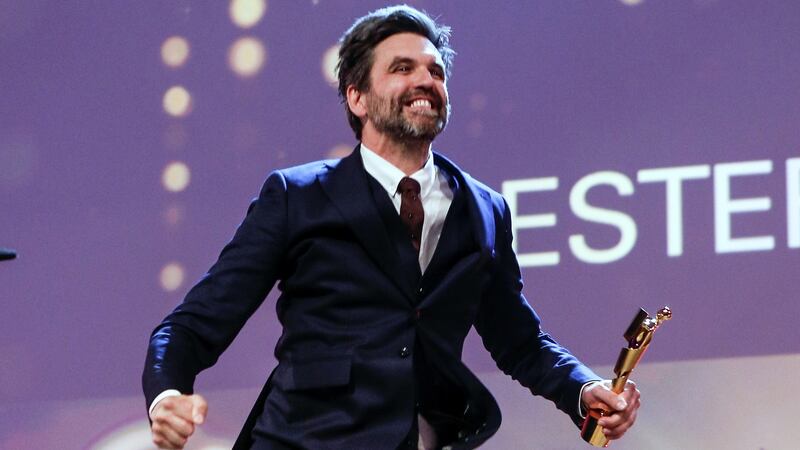It has been done before: think Mike Figgis' Time Code, and Alexander Sokurov's Russian Ark. It has been faked before: think Alejandro González Iñárritu's Birdman and Alfred Hitchcock's Rope. But it is difficult to think of another one-shot single-take film that can match Victoria – the fourth feature from German writer-director Sebastian Schipper – for thrills and spills.
Nobody thought it could be done and the filmmaker had to assure his financers that, should everything go south here and there, they’d produce a jump-cut version. But at 4.30am on April 27, 2014, Schipper and his small cast and crew began a continuous take that wouldn’t finish until almost 7am.
“It was like jumping into the Atlantic,” says the director. “It’s ice cold. It puts you into the moment. That’s what I liked so much about it. You dive in. Everything you thought about before -– how am I going to do this bit later or how is that going to go – everything disappears. Your body takes over. You’re all reflexes.”

Didn’t they ever think about, well, cheating? A quick flare-cut here? A sneaky dark-alley break there?
“No. This was the plan from the very beginning. It would still be a good story, if we had seven cuts or one or four. But the moment you start to pan into the sun or pan into the dark that changes the game. You’re not running into the Atlantic anymore. You’re wading into the Mediterranean.”
Prize haul
Before the film took home a three-prize haul from the Berlin, it was rejected by Toronto and Sundance, allegedly because they couldn't believe it was one-shot. Both festivals ultimately came crawling back. Schiffer has another theory.
“Maybe they just watched the first 20 minutes and moved on. I didn’t have a big name. It is two hours and 40 minutes. Maybe they watched the first 30 minutes and saw young people getting drunk and talking bullshit and the assumed they’re going to keep on getting drunker and they’re going to talk more bullshit.” Their loss, we suppose.
As it happens the bullshit-talking drunkenness is merely the calm before the storm. As the film opens, our titular heroine (Laia Costa) is in an underground club. Sparks fly when she means Sonne (Frederick Lau) and his chums. But the crew’s evening plans are not entirely above board. They owe a professional thug some monies and only a bank heist will cover the debt.
Even if Victoria had not been particularly engrossing, it would have been an achievement. As it happens, the one-take makes for a perfect bedfellow to the film's daredevilry. At first, the film's many swerves and dangers are heightened by the knowledge that the shoot could come unstuck at any moment. Perhaps the biggest plot twist – no spoiler alert – is that the viewer soon forgets about the underlying gimmick.
“When we first screened the film, we were expecting all the discussion to be about the single-take,” says Schiffer.
“We presumed everyone would study for possible cuts. But viewers are smarter than we often give ourselves credit for. You can’t fool them. It wouldn’t have been like robbing a bank, but a cut would have been dishonest. It would have changed everything. They knew it was real. And we’ve been very pleased that people haven’t asked or come up with theories. They just dive in like us.”
The constant movement allows Victoria to morph from something resembling Before Sunrise to something resembling Michael Mann's Heat.
Three attempts
The final version is, in fact, the third continuous take. Schipper and his team rehearsed for 10 days before shooting the film in its entirety for the first time, then took a 10-day break before take two. 17 hours later, they shot for a third and final time.
“It was the only one that worked as a real film,” says Schiffer. “Technically, they all worked. Nobody made mistakes. But you don’t ever leave the cinema thinking: ‘I love this film, they made no mistakes.”
There was no scripted dialogue and yet the director insisted that the actors didn’t repeat their improvisations. “It had to be fresh every time. I wanted them to run for their lives. I didn’t want it to look like a heist. It had to be a heist.”
I wonder if another director – one who wasn’t an actor before transitioning to the other side of the camera – would have entrusted so much to his cast?
“Probably not. You don’t need to micro-manage every gesture and sentence that will stay. What is mesmerising is something that transcends performance. You can’t think, ‘she would never do that’. If the actor portraying the character is doing it, then she is doing that.”
In the wee hours of that April night, Schiffer’s second and third assistants ran on ahead of the cast; cinematographer Sturla Brandth Grøvlen’s name is the first to appear on the end credits in recognition of his tremendous work. Would they do it again?
“Never. Never. Ever. Ever. It was a crazy enterprise.”
What kind of scripts does one get offered when you make the breakthrough one-take action film of the year?
“They are a bit random,” laughs Schiffer. “I’ve been offered a few big action pictures but I worry I’d be the least important person there. Like jumping up to heavyweight before you’re ready. But there aren’t that many one-shot action film scripts for people to send me.”
















